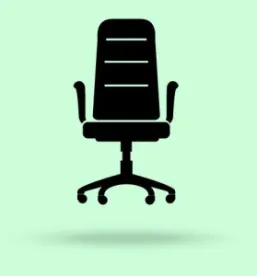The Dutch Supreme Court (Hoge Raad) recently submitted prejudicial questions to the Court of Justice of the European Union (CJEU), the EU’s highest court, to clarify the application of Article 2 (7) of the Berne Convention for the Protection of Literary and Artistic Works (BC). The prejudicial questions relate to the so-called ‘material reciprocity test’ in relation to works of applied art. In this case, which tests geographical orientation, Vitra Collections, a Swiss manufacturer of American origin, claims that the Dutch and Belgium offices of Kwantum, a home-improvement retailer, infringe on Vitra Collections’ copyright by trading its ‘Paris’ chair.
Background
Vitra Collections is a Swiss family business that produces design furniture, including chairs designed by the now-deceased couple Charles and Ray Eames. One of the company’s furniture pieces is the Dining Sidechair Wood (DSW), also designed by Charles and Ray Eames as part of a furniture design competition launched by the Museum of Modern Art in New York in 1948. While created in the United States, the DSW is not protected by copyright there.
Kwantum capitalizes on its home improvement retail chain in the Netherlands and Belgium, wherein it trades in home decor. In 2014, Vitra Collections noticed that Kwantum was selling the ‘Paris’ chair, allegedly visually identical to the DSW.
Subsequently, Vitra Collections sued Kwantum for copyright infringement, seeking a cease-and-desist order and that Kwantum surrender the Paris chairs for destruction, as well as payment of damages. The lower court held that the Paris chair did not infringe the DSW, but the court of appeal overturned this decision, holding the opposite. Now, before the Dutch Supreme Court (Hoge Raad), Kwantum appealed against – most prominently – the court of appeals’ application of the ‘material reciprocity test’ of article 2 (7) BC.
The ‘material reciprocity test’
The material reciprocity test is a test applied to works of applied art, and, in a broader sense, industrial designs and models as well. According to this test, if the country of origin grants special protection (i.e., a special intellectual property regime such as design patents) to such works, designs, and models, then any member of the BC must grant the same special protection. However, if no such special protection is granted in the country of origin, such works fall in the category of artistic works, which can be protected by copyright. As the court of appeals held, and the Dutch Supreme Court did not contradict, it is not required that the object is actually protected by copyright in the country of origin, but that it is eligible to receive that protection there.
At the same time, protections for works of applied art are embedded in EU law (Article 17 (2) of the Charter of Fundamental Rights of the European Union (Charter)). As such, they are regarded as fundamental rights under EU law. Furthermore, the CJEU decided in its RAAP case that the power to limit EU fundamental rights is reserved to the EU legislature, and such a limitation must be provided for by law. However, the limitation must comply with Article 52 (1) of the Charter, which implies that the legal basis which permits the interference with that right must itself define, clearly and precisely, the scope of the limitation on its exercise. It is noteworthy that the application of the material reciprocity test results in the availability of copyright protection for the DSW, as opposed to a limitation, as explained above.
The Dutch Supreme Court has expressed reasonable doubt as to whether, without EU regulation to that effect, the material reciprocity test of Art. 2(7) BC may be applied in the Netherlands or another EU member state with respect to a work of applied art from a third country such as the United States whose author is not an EU Member-State national.
Three prejudicial questions
To answer this question, the Dutch Supreme Court has requested clarity from the CJEU as follows:
| 1) | Does EU law, in particular Article 52(1) of the Charter, require that the limitation of the exercise of copyright in a work of applied art by application of the material reciprocity test of Article 2(7) BC be made by law? |
|
| 2) | Is it solely for the EU legislature (and not national legislatures) to determine whether the exercise of copyright in the EU through application of the material reciprocity test of Art. 2(7) BC may be restricted in respect of a work of applied art from what is considered a third country, and whose author is not an EU Member-State national? If so, is it for the EU legislature to set out that restriction in a clear and precise manner? |
|
| 3) | Are EU Member States precluded from applying the material reciprocity test of Art. 2(7) BC in respect of a work of applied art created in a third country and whose author is not a national of an EU Member State, so long as the EU legislature has not provided for a limitation on the exercises of copyright incorporating this test? |
Conclusion
The impact of the CJEU’s explanation will extend beyond the EU’s borders, given the intersection of EU law and the Berne Convention, which has 179 contracting parties. In this case, if the CJEU decides that the material reciprocity test applies, this may result in copyright protection for the DSW in the EU, even though the design does not enjoy such protection in its country of origin.




 />i
/>i

